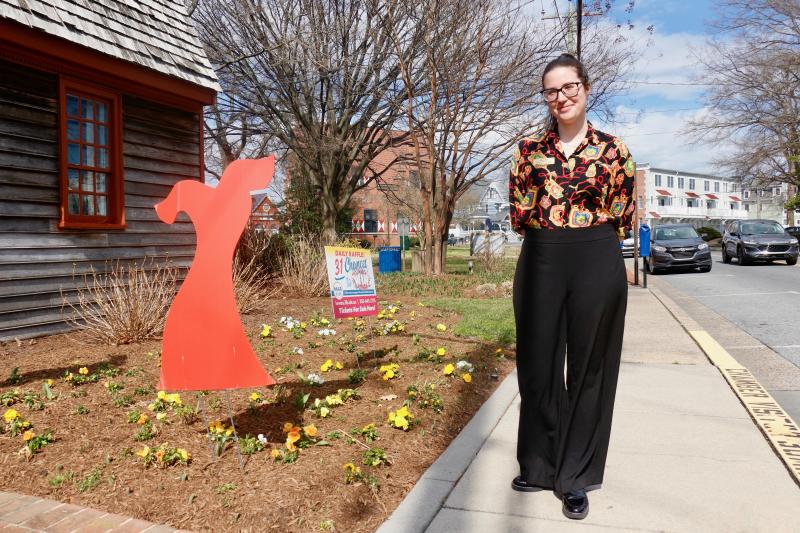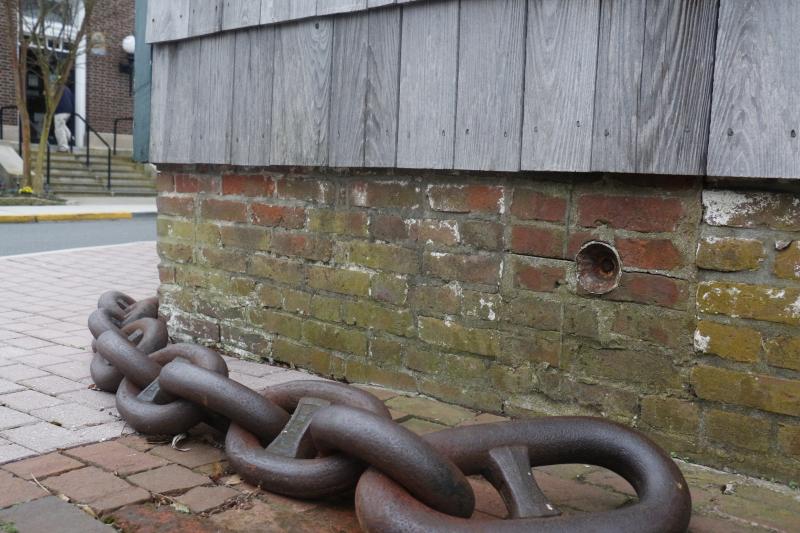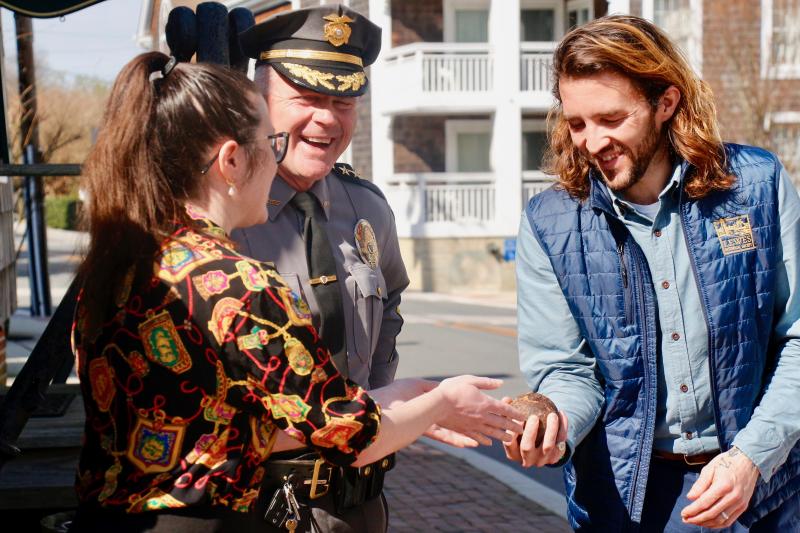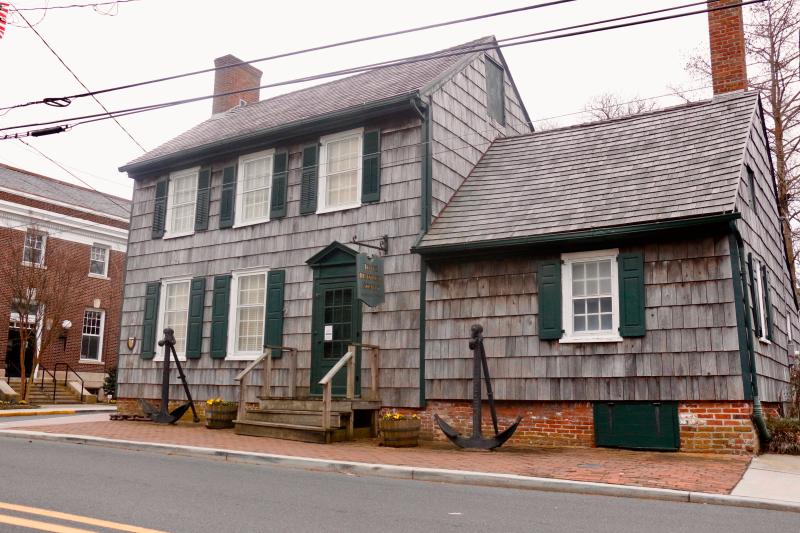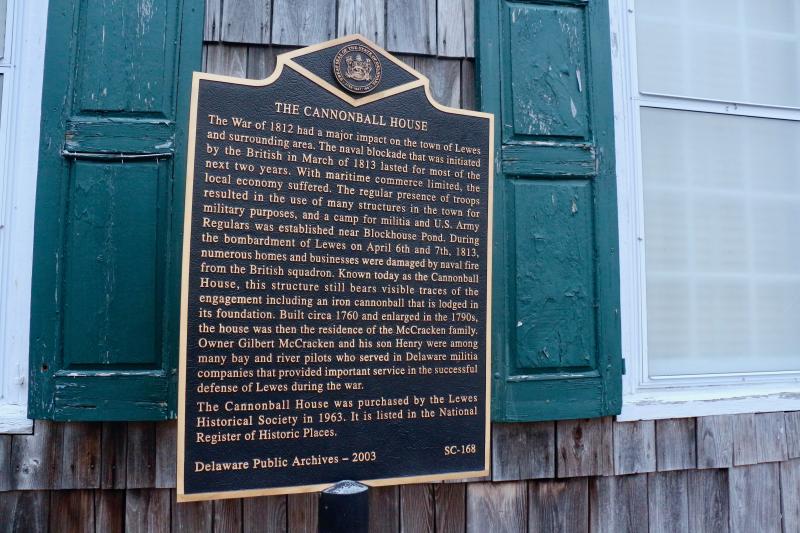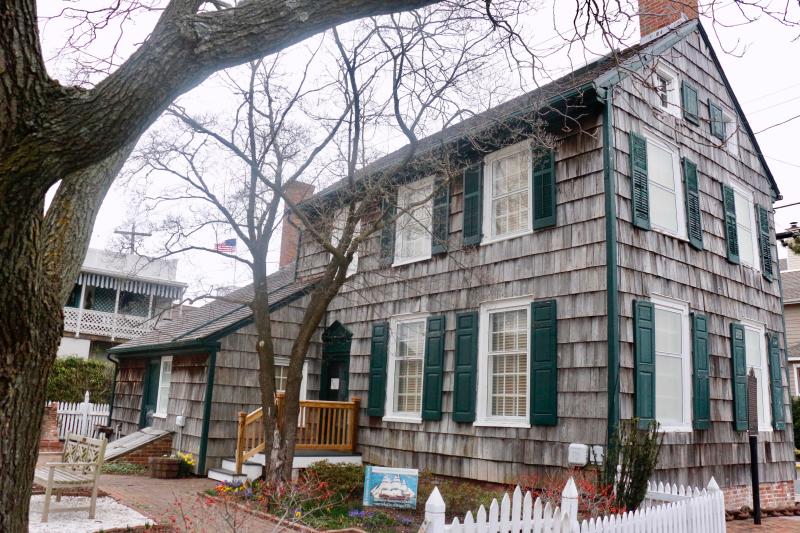Bombshell report: Lewes cannonball found
The cannonball from the Lewes Maritime Museum at the Cannonball House along Front Street has been returned. The disappearance grabbed the attention of the First Town in the First State, prompting a slew of amateur detectives to take up the case both online and at the site itself.
“The case of the cannonball caper has come to a close,” said Lewes Historical Society Executive Director Andrew Lyter at a press conference outside the Cannonball House. He said the return of the symbol speaks to the community of Lewes.
Zwaanendael Museum Lead Historical Interpreter Devon Filicicchia found the missing cannonball on the sidewalk in front of the Fisher-Martin House along Kings Highway on her way into work the morning of Feb. 23.
“It was a very happy accident that I came across it this morning, and as a Lewes resident and a Lewes history lover, I am very glad that it is back where it belongs,” Filicicchia said.
When she found the item, she knew to call the Lewes Police Department based on social media posts circulating about the disappearance.
“We’re guessing it was left intentionally to be found, which is a good thing,” said Lewes Police Chief Thomas Spell.
Social media comments have hinted that the item taken had been there since the War of 1812.
“It’s an original cannonball from a British warship, probably a 6-pound ball,” Lyter said. “It would have been fired from a British vessel in April 1813.”
The real cannonball, however, is still nestled safely inside the museum itself. Hundreds of cannonballs were fired at the area as a result of fortifications built where the 1812 Park is today. The location within the foundation was chosen after an examination revealed repairs were made in the area. The cannonball was welded into place in the 1970s after the historical society acquired the building.
Other commenters went as far as to say the entire building had been unchanged for more than 200 years.
According to the historical society’s website, the Cannonball House was built in 1765 and was the home of Bay & River Delaware pilots Gilbert McCracken and David Rowland. The former was considered a hero during the bombardments of Lewes by the British April 6-7, 1813. McCracken and his son Henry served in a militia of Delaware pilots that defended Lewes until the end of the war in 1815. The home was pelted with cannon fire during the war, creating scars that would remain over the years.
Eventually, Rowland lived in the house and it became known as the Capt. David Rowland House, quartering pilots in the area for generations. The creation of the Lewes Historical Society actually stemmed from worries about the plight of the home in the summer of 1961. Residents were increasingly worried about Lewes losing its character as old homes were knocked down and new ones were built in their place. One evening that summer, concerned residents held a meeting on Pilottown Road and formed the Lewes Historical Society.
Shortly after forming a membership, funds were raised to begin purchasing properties for preservation. The first home purchased was the Burton-Ingram House on Second Street in 1962. The Rowland House, as it was referred to at the time, was purchased shortly after in 1963 and rose to fame as the Cannonball House.
The Cannonball House museum is by far the most visited destination of all the 14 properties owned by the historical society.
